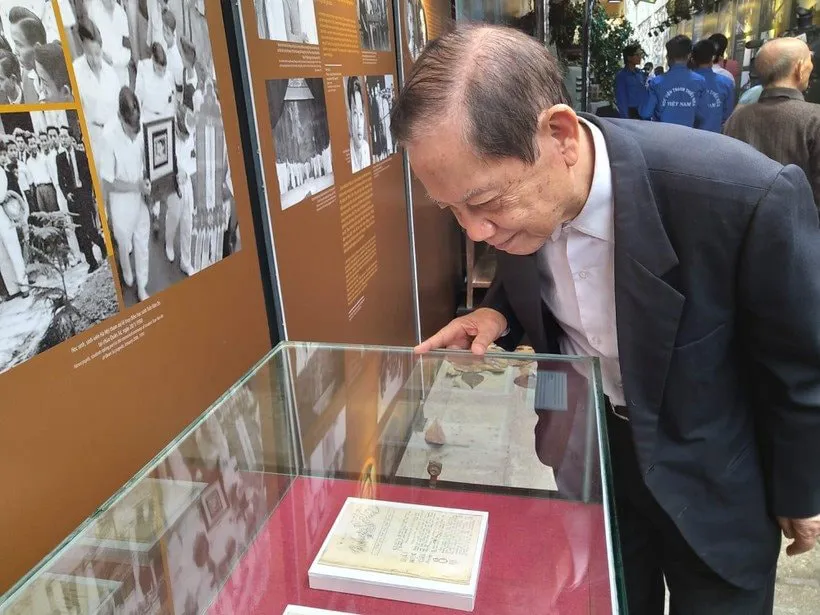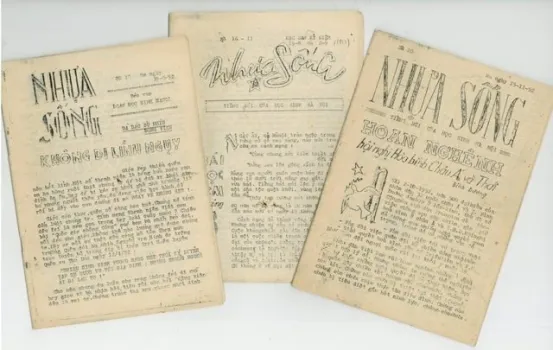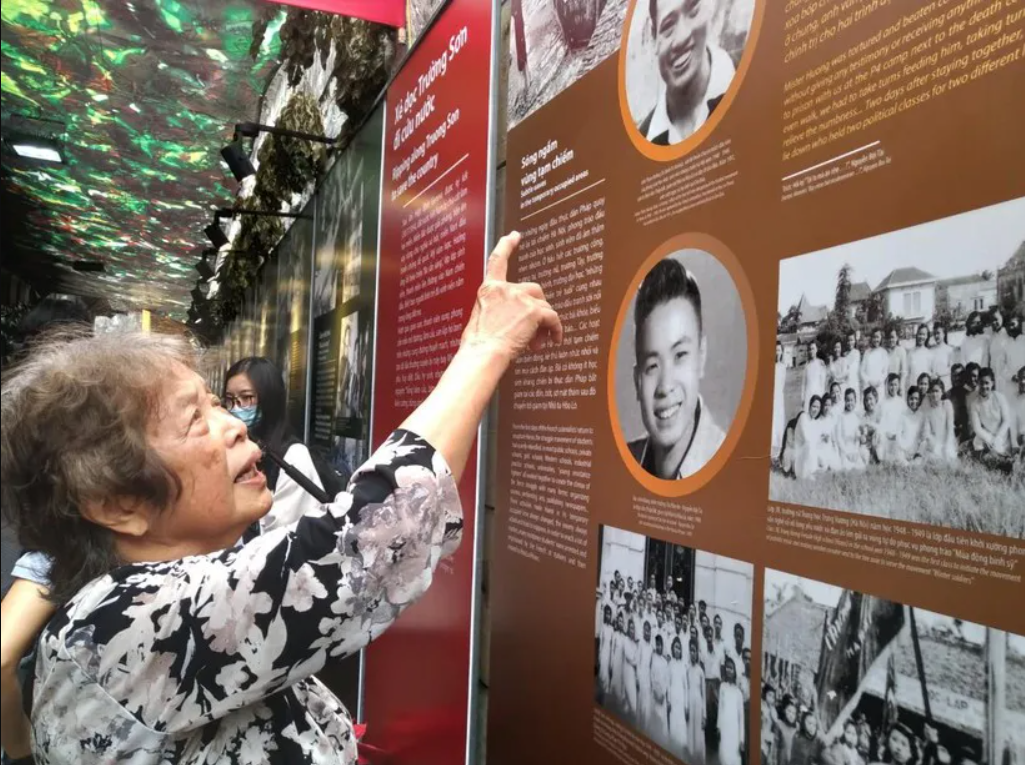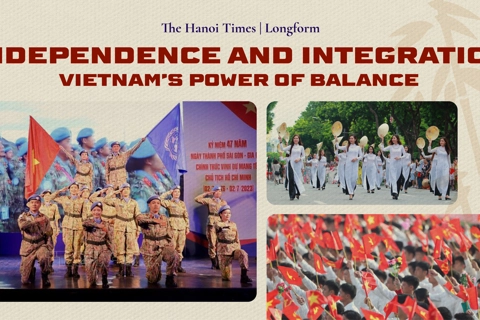Nhua Song - Tool of Hanoi’s youth in resistance war
Throughout the war, generations of students in the capital engaged in a variety of protests and acts of patriotism and publishing clandestinely Nhua Song (Life Essence) Newspaper being one of the emblems of the revolutionary youth of the time.
THE HANOI TIMES — Three issues of Nhua Song (Life Essence) Newspaper, a publication printed and secretly distributed by Hanoi students from 1947 to 1954, and many documents on revolutionary activities of the capital's youth has been preserved at Hoa Lo Prison relic site, the place where many who involved in publishing and distributing the newspaper were imprisoned and tortured.
Nhua Song (later the Tien Phong Newspaper) is remarked as one of the most effective tools for mobilizing young people and students in practical activities to support the resistance.

Duong Tu Minh, the youngest son of the famous educator - Professor Duong Quang Ham, was actively involved in publishing the newspaper at that time.
He said that Hanoi students' activities were fervent, with rallies, parades, demonstrations, strikes, flag-raising, printing posters, distributing leaflets, condemning the crimes of French colonialism and so on.
"There is no better way to propagate these activities to young people than to publish a newspaper. That's why Nhua Song was born and distributed to many schools in Hanoi where anti-war movements broke out," Minh told The Hanoi Times.
Chu Van An High School, the cradle of resistance movements, was the hub for the distribution of the newspapers that were printed at students' home.

Minh's house on Hang Bong Street was also one of the places where his team printed newspapers in 1949-1950. The newspaper was printed on A5 paper, the size of a student's notebook, so that it could be easily carried in a school bag. The covers of the issues were often disguised with the names of student books: Math, Spelling, Music, or hidden behind old notebook covers.
In the beginning, Nhua Song Newspaper was printed by hand using purple ink lithography. In 1951-1952, it was printed on white paper using the innovative Ronéo technology. It had a soft cover that resembled a student notebook and made it easier to carry in a pocket.
Nguyen Hac Dam Thu, born in 1935, former Deputy Director of the International Department of the Vietnam Women's Union, was responsible for printing the newspaper.
According to Thu, the printing was done in a secret chain involving many students. Almost no one knew who did the previous and subsequent steps. Some groups specialized in donating paper and notebook covers, and others focused on collecting articles from writers. Buying printing paper also had to be divided into shifts to avoid enemy suspicion if one person bought too much.
"Because typewriters and printers often made a clattering noise, we often made the steps during the day and were careful if doing so at night. Some people secretly placed printers in their family's bathrooms because they could turn on the water to muffle the noise of the printers," Thu said.
Printing newspapers in a secret way was difficult, but distributing them was even harder.
Thanks to the small size, the newspapers were taken to school and given to readers easily. Minh and Thu's team silently observed their readers. Those who quietly hid the paper in their pockets and took it home to read were sympathetic to the resistance.

Gradually, the Nhua Song Newspaper helped the Resistance Youth Union attract many sympathetic young people to the organization. True to its name, Nhua Song is a newspaper that carries the spirit of the students during the Resistance War. Later, many students from the Hanoi Resistance Youth Union were accepted into the Hanoi National Salvation Youth Union. Nhua Song was later renamed Tien Phong (Vanguard) - the mouthpiece of the Central Committee of the Ho Chi Minh Communist Youth Union.
"Many people think it was easy for us because we were born in Hanoi and studied in prestigious schools, but we had to save every penny and spend very sparingly to contribute to the secret newspaper. And it was Nhua Song that nurtured our faith and determination to overcome all difficulties and challenges when Hanoi was temporarily occupied by the enemy," Thu said.
According to Thu's cousin Do Hong Phan, although it was a secret newspaper, Nhua Song had a deep and wide influence on all classes of young people, students, and schoolchildren in the capital at that time. The content of the paper was very rich and lively.

Do Hong Phan recalls the time she was imprisoned in Hoa Lo for printing the Nhua Song Newspaper. Photo: Ngo Minh/The Hanoi Times
It disseminated the Party's guidelines and policies, called on students not to join the French army, and provided information on the war situation. The paper also raised many issues, especially in schools, such as discussing the motivation to study, what to study for, and actively mobilizing students to fight against decadent culture.
The newspaper also contained reportages, poems, articles on the country's anniversaries, satirical paintings that strongly criticized French colonialism, and the bad habits of some students.
"The newspaper was the means to guide the activities of the capital's youth during the war. The enemy tried to suppress it because of its influence," Phan said.
Many students in the capital were arrested, brutally tortured, and imprisoned in Hoa Lo Prison, including Duong Tu Minh and Do Hong Phan. However, those who were not jailed continued to maintain the movement. They kept making efforts to let Nhua Song Newspaper spread among students who were enthusiastic about the revolution, nurturing their hopes for liberation.











